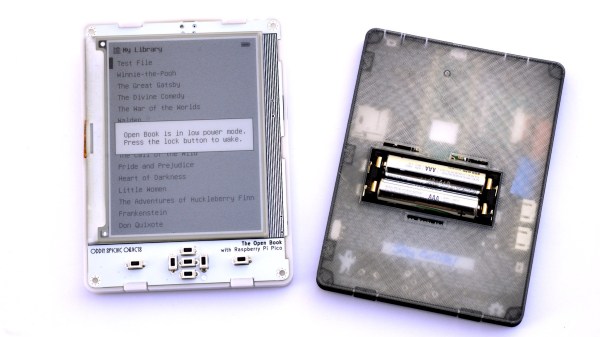Modern e-readers such as the Amazon Kindle are incredible pieces of engineering, but that doesn’t mean there’s no room for improvement. A device custom-built to your own specifications is always going to provide a more satisfying experience than something purchased off the shelf. That’s why [fel88] put together this custom e-reader which offers a number of unique features, such as a solar panel on the back and button-free operation.
One issue with modern e-readers, at least as [fel88] sees it, is that they have a lot of unnecessary features. This project removes most of them, stripping down the device to its core functionality: a straightforward menu for selecting books and gesture-sensing for navigating the menu as well as changing the pages. The only physical input on the device is a small reed switch to turn the device on. A 3D printed case holds the e-ink display and encloses the inner workings, driven by an Arduino Mega 2560 and powered by three lithium-ion capacitors (LICs) and a small solar panel.
By dropping all of the unnecessary features, the device doesn’t need to waste energy with things like WiFi or Bluetooth and can get around 880 pages on a single charge, not counting any extra energy coming in through the solar panel while it’s operating. The LICs will also theoretically improve its life cycle as well. If you’re still stuck with a paperweight when you formerly had a working e-reader, though, there are plenty of ways to bring old devices back to life as well.




















